There’s been a lot of talk in Portland in recent years about the need for transportation reform advocates to take a more intersectional, coalition-oriented approach when pushing for big changes.
The NYC 25×25 campaign launched Monday by New York City-based nonprofit Transportation Alternatives looks to have set the standard by which all such efforts will be judged. It’s one of the most bold, exciting, and inclusive advocacy efforts we’ve ever seen.
Advertisement
The aim is to push New York City’s next mayor and other elected officials to “give streets back to people” by transforming 25% of the space currently used by cars and their drivers into space that’s green, calm, and welcoming for people not using cars. Several things about this campaign strike me as important and worthy of close attention by Portland advocates and leaders.
The Ask
“What if we gave NYC streets back to people?”
“25 X 25” is concise and catchy. It’s also both bold and achievable in the context of what New York City has already done with street space (thanks in large part to former DOT Chief Janette Sadik-Khan). And unlike the typical 20-year horizons of many plans we rally around, this one is due in just four years. That timeframe creates urgency for the media and decision-makers while also lighting a fire under activists who are much more likely to sign up to volunteer for something that’s going to have relatively instant results.
There’s also beauty in asking for 25% of road space. In real terms it’s a ton of square mileage; but in conceptual terms it doesn’t sound like that much at all. It’s harder for haters to say this is a massive, anti-car power-grab, when TA is “only” asking for a quarter of the space.
And notice how they want road space “for the people”? This isn’t about bikers or walkers or bus users: It’s about “the people”. It reminded me of what former mayor of Bogota, Colombia Enrique Penalosa said in 2006, “The essence of the conflict today is cars versus people… We can have a city that is very friendly to cars, or a city that is very friendly to people. We cannot have both.”
I also like how they’ve directed the ask not to “the city” or the transportation department but specifically to the mayor and anyone running for office. TA knows the power is in the politics.
Here’s a snip from their pitch:
“Our current allocation of street space is fundamentally inequitable. Streets cover more than 91 square miles of New York City’s public space. Space for parking and moving cars — which a minority of residents own — represents more than 75 percent of New York City’s current streetscape. The remaining scraps of space are devoted to car-free bus lanes (0.02 percent), bike lanes (0.93 percent), and sidewalks (24 percent). A better future will require a new approach from city officials — one that sees streets as a system of public spaces designed to serve people and breaks from traditional thinking centered on moving and storing cars.
…What could be done in a city with 25 percent less space for cars and 25 percent more space for people? Future leaders of New York City could create more than 13 Central Parks worth of new space by 2025.”
The Visuals
Visuals are everything and TA nailed this campaign with a very catchy video and supporting material. The video is less than one minute and includes powerful text and graphics that illustrate the tremendous potential of the ask.
Where the video is short and sweet, the robust report shared on the campaign website is where the rubber hits the road. TA has compiled “in methodical detail” an exhaustive representation of the problem and many clear examples of how to move forward — all backed up with data and links to sources.
Advertisement
The Coalition
I saved this for last because it’s so important. TA launched this campaign with a vast coalition that spans across geographic and issue boundaries. They have groups signed onto this vision who represent not just the typical transportation and environmental groups; but folks who care about disability rights, public health, culture and the arts, labor unions, business organizations, political groups, and many others. All told their coalition includes more than 80 local organizations and businesses.
TA’s press release ended by including several pages of quotes from many of the coalition members. I scrolled and scrolled to read them all and I think the lack of brevity on TA’s part was an intentional move to demonstrate just how much support exists for this campaign.
This is such important and quality work from TA and I’m so glad they’re doing it! I hope advocates in Portland (and everywhere else) are inspired by it. I’m sure they won’t mind you stealing some of the ideas and adapting them elsewhere.
Check it out at NYC25x25.org.
— Jonathan Maus: (503) 706-8804, @jonathan_maus on Twitter and jonathan@bikeportland.org
— Get our headlines delivered to your inbox.
— Support this independent community media outlet with a one-time contribution or monthly subscription.



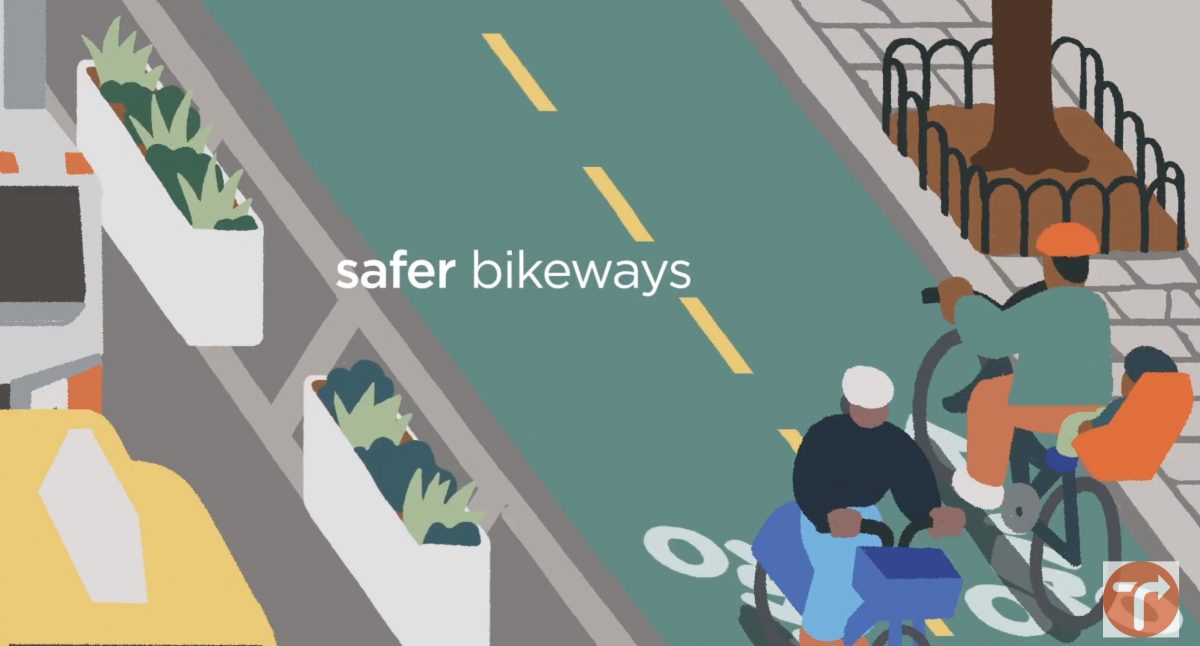

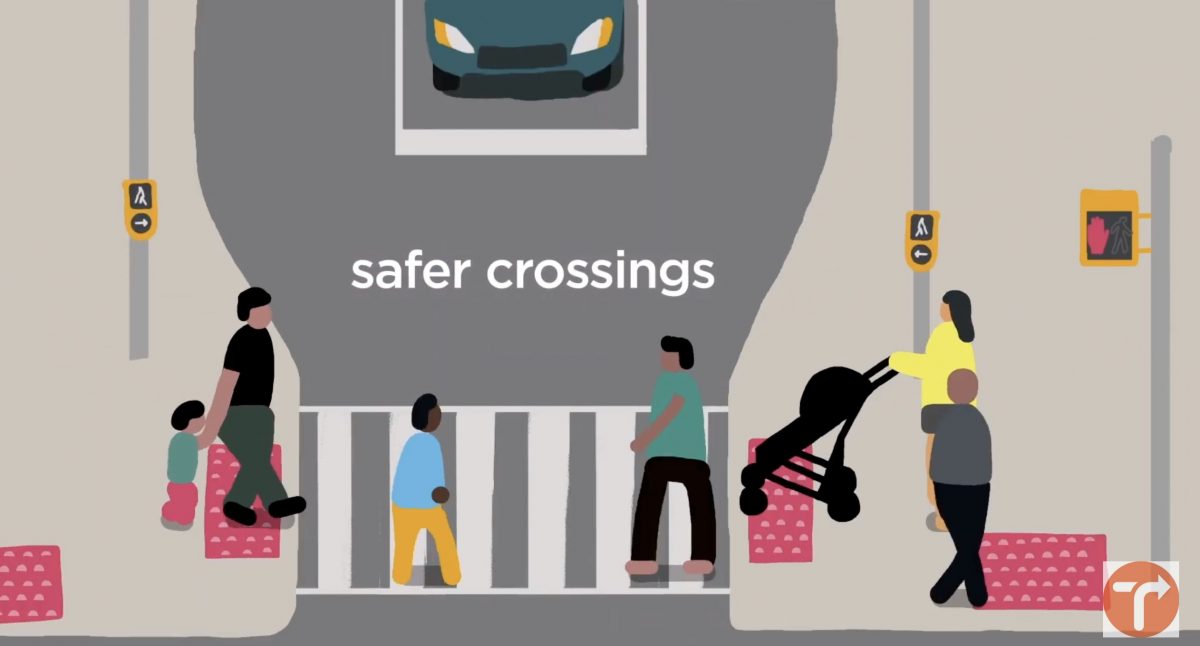

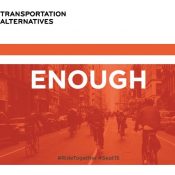
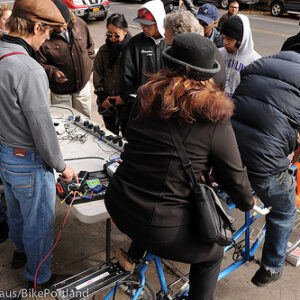
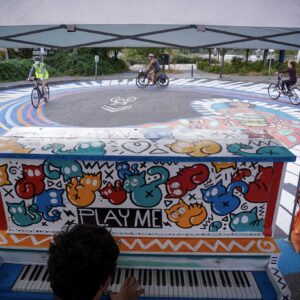
One of main reasons why the NYC DOT has been so successful at increasing miles of separated bike lanes and modal share-other than the terrific advocacy by TA and the few council members like Menchaca and Lander-is an adherence to creating space for people despite high traffic counts and high demand for parking. The 14th busway, Jay St busway/PBL, Flushing busway and soon to be separated bikeway on the Brooklyn bridge all took space from places where cars were the only mode or dominant and reduced or completely eliminated car capacity. Could PBoT look at a street which is gridlocked and consider removing cars entirely… or even removing space to include other modes?
I think something that always has to be understood when comparing NYC to PDX is that the problems are always much bigger in the Big Apple… And because of that it can in some strange way be easier to ask for bold things. What I mean is, a big challenge to creating urgency for this stuff in Portland is that for many/most people things just aren’t that bad. We’re already the “best biking city in America” and “we have great neighborhood greenways so why do I need more bike lanes?” right? Our traffic jams are also relatively tame and infrequent compared to NYC’s legendary jams. That being said, I think there are some good lessons from this particular campaign that I’d love to see have an influence here in Portland.
Also to tack on to this discussion, It’s probably easier to ask for bolder pedestrian and transit related improvements in NYC because that’s how a majority of its population already gets around. Advocates just want to make it better. Sticking your neck out for peds/bikes/transit gives NYC politicians and leaders an opportunity to be ‘bold’ and not risk their electorate.
Here in PDX however, local politicians have to weigh immediate benefits of the minority (peds/bikes/transit) against the majority of their electorate, which still relies on driving. I think what we do accomplish is a local culture (albeit of majority drivers) that understands that these improvements are needed and will still vote for leaders who support it.
Although im always down for incrementalism, it just doesn’t need to shake down that way in NYC (or Paris for that matter).
yes. absolutely. All transpo advocacy in NYC should be seen through that lens of it being relatively anomalous in America for having so many low-car/carfree people. That gives TA a huge running start.
Certainly the modal share in NYC is vastly different, which makes it easier for council members to ask for PBLs and bus lanes etc. I’m not exactly sure how much of a factor it is in the adoption of safe street design. But what about places like Vancouver B.C. where modal share was about the same as Portland a decade ago? PBLs were quite unpopular until businesses saw the benefit and now ask for more. DoTs can act as a force for change such as in NY or the status quo as in Portland. Many of the projects that exist, are there because the DoT proposed interim designs (eg 34th Ave Queens) and citizens discovered how transformative they can be to their neighborhoods. That IMO is what is missing at PBoT. No leader can fill that gap.
The secret weapon of Janette Sadik-Khan’s toolkit was: pilot projects.
Pilot projects:
1) Are dirt cheap
2) Can be implemented overnight
3) Avoid most pushback
PBOT needs to operate more like a laboratory to be more effective. Deploy tons of experiments, measure results, adjust as needed.
Exactly. Advocates shouldn’t have to propose Better Naito or Better 4th. That should be PBoT’s first job.
It reminds me of Portland Parks and off-road cycling. Knowing that there is significant demand in the City, shouldn’t Parks be looking for ways to immediately add trails? How long have advocates been working to get one decent piece of singletrack trail? 20+ years? The inertia on these issues is unbelievable.
Hey Brian. Yep. I’d contact Rubio and share research on mtb impact to the environment. To my knowledge there is no statistical difference on environmental impact between hiking and biking. Pretty silly what happened around River View. Another article on the topic that gives a review of the research.
I don’t think that is really true based on my casual following of NYC transportation. In NYC some of the biggest transportation corridors in the city have extremely affluent people living on them who are opposed to bike lanes, especially at the cost of parking. The battle for bike lanes on Central Park West comes to mind. I think NYC politicians are in far more danger of getting pushback from their patrons than Portland politicians are for that reason. Portland politicians aren’t at risk of losing patrons by doing work out in the east county.
Portlands big problem is that most neighborhoods don’t have any representation in the city government. Is there anyone on the city council that lives east of 39th? I know the peninsula has no representation. That means our city council only represents people who drive through the neighborhoods that need to be improved, whether that be the freight companies that own ODOT and PBOT or NIMBYs in the west hills who drive to the airport.
Of course PBOT is a city agency without a mission. Stuck between building primarily freight and SOV orientated infrastructure demanded by the C-Suite and their freight owners while also trying to pretend to care about other modes of transportation and climate change.
Hence how you end up with “bike lanes are bad for the environment”
Doesn’t Hardesty live in Gateway?
I believe Carmen Rubio also lives in east Portland.
Not sure, she’s the only one where I don’t know the general area they live in. I guess I don’t know where Ted lives but I know he wouldn’t want to live somewhere so unfashionable as east Portland.